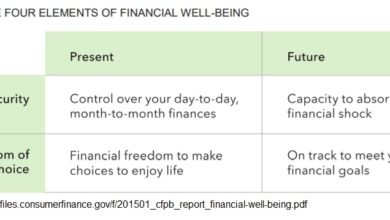Bridging Wealth Gap Opportunities Through Financial Education


In a world where the reality of economic disparity is as undeniable as it is challenging, understanding the wealth gap has never been more critical. This division, marked by significant differences in wealth and income levels across various demographics, impacts communities and stunts the potential for growth on both individual and societal levels. However, amidst these challenges lies a beacon of hope: financial education.
Understanding Whats Really Going On
The wealth gap is more than just a financial divide; it’s a reflection of unequal access to opportunities that can impede progress for generations. This disparity affects not only individual and family prosperity but also the broader economic health of communities and nations.
Differences in Education and Income Levels
Economic disparity manifests through limited access to quality education, healthcare, and employment opportunities, contributing to a cycle of poverty that can be challenging to break. This cycle is further exacerbated by differences in education and income levels, which are closely intertwined with wealth accumulation over time.
Education plays a pivotal role in determining income levels, which in turn influences wealth accumulation. However, access to quality education, including financial literacy, remains uneven, posing a significant barrier to closing the wealth gap.
The True Value of Financial Education
Financial education emerges as a powerful tool in bridging the wealth gap. By empowering individuals with knowledge on managing finances, investing, and saving, we equip them with the skills necessary to make informed decisions that can significantly alter their economic trajectories.
Who Can Help?
Organizations play a crucial role in democratizing access to financial education. From providing resources and workshops to advocating for financial literacy inclusion in school curricula, there are multiple avenues through which organizations can make a tangible impact.
Getting The Community Involved
Grassroots, community-based strategies are essential in addressing the unique needs of different populations. Tailoring educational programs to the local context ensures relevance and effectiveness, fostering a more inclusive approach to financial literacy.
Join Us
The path to bridging the wealth gap is a marathon, not a sprint. It requires a concerted effort from individuals, organizations, and governments to create an ecosystem where financial education and opportunities are accessible to all.
We invite you to take a step towards financial empowerment by joining our upcoming IFW Retirement Score Webinar. Together, we can unlock the doors to economic opportunities and pave the way for a more equitable future.
Register Here Today: www.the-ifw.com
Erik C. Sussman, CLU®, ChFC®, CFP®, and CEO of The Institute of Financial Wellness founded the company to provide financial education, resources, and services that help people live their best lives.
For Financial Professionals:
The Institute of Financial Wellness provides proven sales and marketing systems, state-of-the-art technology, training, and support to financial professionals nationwide. The IFW helps financial professionals grow their practices to the next level! IFW Certified Financial Professionals are an elite group of professionals that, together with the IFW, help people succeed financially and live their best lives.
For Consumers:
The Institute of Financial Wellness is the most comprehensive multi-media network for financial education, resources, and services. In fulfilling our mission to help people “Get There” and live their best life, we deliver the following five unique value propositions:
Our philosophy is that when it comes to financial decisions, Never say Never. Never say Always. It Depends!






